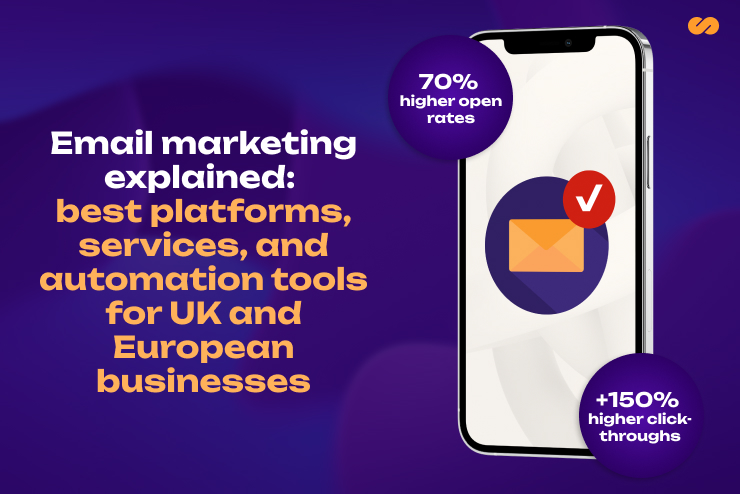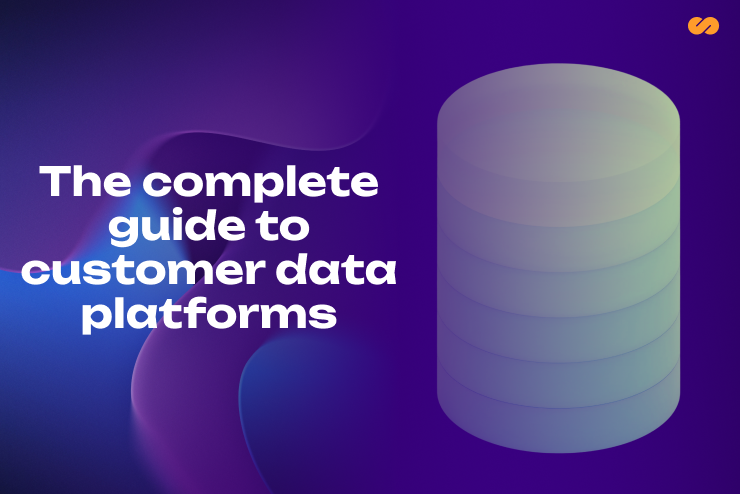How to Track User Behaviour, Activity and Customer Journeys on UK and EU Ecommerce Websites
Your analytics dashboard shows 50,000 monthly visitors, but only 847 conversions. The data explains what happened, not why 98.3% of visitors left without acting. Traditional analytics can track averages and visits but miss the behavioural insights that explain decisions.
In the UK, digital adoption is among the highest in Europe, with 67.8 million internet users (97.8% of the population) online in 2025. Social media activity is strong with 54.8 million active identities, and businesses are investing heavily in user behaviour tracking tools. Over 65% of UK organisations already apply behaviour analytics in retail, banking, and government to improve customer experience, reduce risk, and strengthen engagement.
Research shows that companies with over 40 landing pages using comprehensive user behaviour tracking achieve conversion rate optimisation of up to 500% compared with those relying only on basic metrics. More importantly, businesses using advanced visitor identification technology can recover 15% to 25% more revenue from previously anonymous traffic.
The key is knowing not just who visits your site, but how to track user activity on your website. By understanding hesitations, preferences, and decision-making patterns, retailers can transform anonymous browsing into actionable opportunities for growth. This guide explores proven strategies to track user behaviour on your website and improve both performance and profitability.
What Is User Behaviour Tracking and Analytics?
Online behavioural tracking systematically monitors and records user interactions across digital touchpoints. This process captures granular details about how visitors navigate websites, where they focus attention, and what actions they take or avoid.
User behaviour analytics (UBA) goes further by combining quantitative interaction data with qualitative insights about user motivations. While traditional web analytics answer questions about volume and frequency, UBA reveals the context behind user actions.
Core Components of Behavioural Tracking
UBA platforms capture multiple interaction types simultaneously:
- Mouse movements → Indicate attention patterns, as users often follow their cursor with their eyes.
- Click tracking → Reveals which elements attract engagement and which are ignored.
- Scroll behaviour → Shows content consumption patterns and helps identify optimal page lengths.
- Form interactions → Highlight potential friction points in conversion processes.
What Distinguishes UBA from Conventional Analytics?
Standard analytics platforms like Google Analytics provide aggregated metrics, such as total visits, average session duration, and bounce rates. These offer valuable insights but lack context about individual user experiences.
UBA fills this gap by recording specific behavioural sequences that reveal user intent and experience quality.
Example: Conventional analytics might show a 60% bounce rate on your product page. UBA reveals whether users are leaving because they cannot find pricing information, struggle with navigation, or are comparing options across multiple tabs. This contextual understanding enables targeted improvements rather than educated guesses.
Tracking the Full User Journey
Modern UBA platforms employ advanced technologies, including real-time event tracking, cross-device recognition, and identity resolution. These systems connect fragmented browsing sessions into unified customer profiles, enabling businesses to understand complete journeys rather than isolated interactions.
How to Track User Activity on eCommerce Websites
Effective tracking of user activity requires a balance between data collection, website performance, and user privacy. The process begins with setting clear objectives and selecting the right tools.
Essential Implementation Steps
Before installing tracking code, clarify what you need to know.
- Investigating checkout abandonment?
- Analysing content engagement?
- Testing navigation ease?
Different goals require tailored events and configurations.
Most platforms use JavaScript tracking code installed site-wide. Modern implementations rely on asynchronous loading to avoid slowing down your site. Place the script in the <head> section of every page you want to monitor.
Beyond page views, set up event tracking for:
- Button clicks
- Form interactions
- Video engagement
- Document downloads
- Scroll milestones
This transforms raw traffic into actionable behavioural insights.
Tracking the Customer Experience
Understanding experience goes beyond monitoring clicks. Comprehensive tracking requires:
- Journey mapping → Visualise the full path from arrival to conversion or exit.
- Obstacle detection → Identify friction like slow load times, unclear CTAs, or complex forms.
- Real-time feedback → Capture user sentiment through embedded feedback tools.
- Performance monitoring → Track load speed, server response, and rendering issues.
Advanced systems also identify anonymous website visitors, linking browsing behaviour to unified profiles and uncovering opportunities for engagement.
Privacy-Compliant Tracking
Businesses in the UK and EU must ensure GDPR compliance when implementing user behaviour tracking:
- Obtain explicit consent for personal data collection
- Anonymise IP addresses and sensitive information
- Provide clear opt-out mechanisms
- Maintain transparent data policies
Regional adoption is accelerating:
- Spain → 96.4% internet penetration, with YouTube engaging 83% of users; analytics market to exceed $1bn by 2035
- France → Over 55% of firms use behaviour analytics for compliance and fraud prevention
- Italy → 89.9% penetration with strong app analytics growth
Modern platforms now deliver privacy-first solutions, collecting insights without excessive reliance on cookies or intrusive tracking methods.
Best Analytics Tools for Tracking User Behaviour on Websites
The user behaviour tracking landscape offers numerous platforms, each with different capabilities, specialisations, and pricing. The right tool depends on your business needs, technical resources, budget, and privacy considerations.
SaleCycle: Leading in Anonymous Visitor Identification
SaleCycle specialises in identifying anonymous visitors and converting them into actionable insights. Its powerful identity resolution system can recognise up to 70% of previously anonymous web traffic without requiring forms or account creation.
Key features include:
- Real-time visitor identification through behavioural pattern analysis
- Cross-device tracking to connect activities across platforms
- GDPR-compliant data collection and privacy protection
- Behavioural triggers for personalised engagement
- Integrated analytics dashboards combining identity and behaviour insights
By combining first-party data with advanced matching algorithms, SaleCycle helps businesses understand and engage visitors who would otherwise remain invisible, particularly useful for e-commerce businesses facing high abandonment rates.
Other Leading Platforms
- Contentsquare → Enterprise-grade analytics with session replay, heatmaps, automated journey analysis, and AI-powered insights to identify friction points.
- PostHog → Open-source analytics with self-hosting options, extensive event tracking, and funnel analysis for complete data control.
- Hotjar & CrazyEgg → Visual behaviour tracking through heatmaps, session recordings, and user feedback to optimise page-level interactions.
- Userpilot → Combines behaviour tracking with engagement tools, ideal for SaaS onboarding and product adoption monitoring.
- Datadog → Real user monitoring with detailed performance analytics, suited for technical insights alongside behaviour tracking.
Choosing the Right Platform
When evaluating tools, consider:
- Interaction coverage → Does the platform capture clicks, scrolls, form interactions, and cross-device activity?
- Privacy compliance → GDPR, CCPA, and other regulations; look for consent management, anonymisation, and opt-out capabilities.
- Integration → Compatibility with CRM, marketing automation, and analytics stacks for unified insights.
- Insight delivery → Clear dashboards, visualisations, and reporting interfaces for actionable decision-making.
Selecting the right platform ensures you can track user behaviour on your website effectively, turn anonymous traffic into measurable opportunities, and optimise customer journeys across multiple channels.
How to Track Mobile User Behaviour Using Analytics Tools
Mobile user behaviour tracking presents unique challenges requiring specialised approaches. With mobile traffic now exceeding 60% of web visits globally, understanding mobile-specific interaction patterns is essential for business success.
Compared to desktop users, mobile users exhibit different engagement behaviours:
- Touch interactions replace mouse movements, affecting attention patterns
- Screen size limitations influence content consumption and navigation
- Variable connection speeds impact patience and engagement levels
- Session durations tend to be shorter but more frequent
- Conversions often span multiple sessions and devices
These differences make dedicated mobile tracking strategies critical.
Effective Mobile Tracking Strategies
Modern analytics platforms capture comprehensive touch interactions, including:
- Taps, swipes, pinches, and long presses
- Navigation paths and gesture-based behaviours
- Session frequency and device-switching patterns
Many mobile users start research on their phones but complete purchases on desktop. Advanced tracking systems use identity resolution to link these cross-device journeys, providing a unified view of user behaviour rather than fragmented data.
Page load speeds have a significant impact on mobile engagement. Tracking tools should correlate performance metrics with behavioural data to highlight optimisation opportunities specific to mobile experiences.
Implement mobile-optimised tracking code that minimises performance impact on slower connections. Progressive loading and prioritising essential events ensure accurate data collection without slowing the site.
How to Visualise User Behaviour Over Time
Temporal behaviour analysis uncovers patterns about when and how users interact with websites. Understanding these time-based trends enables businesses to optimise content delivery, adjust marketing campaigns, and enhance user experiences based on engagement peaks.
Time-Based Visualisation Techniques
- Hourly Activity Heatmaps → Display engagement intensity throughout daily cycles, highlighting peak interaction periods and the best times for content updates or promotions.
- Session Duration Analysis → Tracks how engagement evolves within individual sessions, revealing optimal content lengths and typical drop-off points.
- Journey Timeline Visualisation → Maps user pathways chronologically, showing how behaviour changes across the entire customer journey. Combined with AI customer segmentation, this helps identify micro-segments with unique temporal behaviours for personalised targeting.
- Real-Time Activity Dashboards → Offer live insights into current user actions, enabling immediate responses to emerging patterns. These dashboards are particularly useful for e-commerce teams monitoring cart abandonment rate during peak hours or tracking user frustration indicators.
Long-term temporal analysis reveals seasonal engagement trends, popular content preferences, and evolving expectations, providing data-driven support for strategic planning and anticipatory user experience optimisation.
Key Metrics to Measure User Behaviour on a Website
Measuring user activity effectively requires a balance of quantitative metrics and qualitative insights. The goal is to understand engagement quality, conversion effectiveness, and overall user experience, while aligning with specific business objectives.
Comprehensive Measurement Framework
Engagement quality metrics include:
- Time on key pages → Indicates content value and user interest
- Scroll depth → Shows how much content users consume
- Click-through rates on internal links → Assesses content effectiveness
- Return visitor behaviour → Highlights engagement evolution over time
Conversion performance tracking includes:
- Funnel completion rates → Track progression toward key goals
- Micro-conversion achievements → Monitor smaller actions that lead to major outcomes
- Attribution analysis → Identify which activities drive desired results
- Revenue per visitor → Understand the financial impact of user actions
Quality assessment covers:
- Technical errors → Pinpoint issues affecting user activity
- Load time correlations → Reveal performance impacts on behaviour
- Frustration indicators → Track rage clicks, quick exits, or hesitation points
- User satisfaction surveys → Gather direct feedback on experience quality
Advanced Approaches: Predictive Insights and AI
Predictive analytics leverage historical behaviour patterns to forecast future user actions, enabling proactive strategies and personalised experience delivery.
Cohort comparison analysis compares user groups to identify successful engagement patterns, helping businesses optimise experiences for broader segments.
Multi-touch attribution assigns conversion credit across the entire user journey, revealing which interactions contribute most significantly to outcomes.
These advanced approaches allow businesses to track user behaviour on their website comprehensively, providing insights that guide both tactical improvements and strategic decision-making.
How to Track and Analyse User Journeys on Websites
User journey tracking reveals complete narratives of visitor navigation, from initial arrival through to final actions or exits. Understanding these pathways enables businesses to track the user journey on the website and optimise experiences across entire journeys rather than focusing only on individual pages.
Journey Mapping Methodology
- Entry Point Analysis → Tracks where users begin their journey and initial activity patterns. Different traffic sources generate distinct behaviour characteristics, requiring tailored optimisation strategies.
- Pathway Visualisation → Maps the routes users take through the website, revealing popular navigation paths, common diversions, and frequent exit points. This highlights content that guides users toward desired actions and flags areas contributing to higher cart abandonment rates.
- Decision Point Identification → Identifies moments when users choose between options or actions. Understanding these critical junctures allows businesses to provide support, remove obstacles, or enhance persuasive elements.
Journey Optimisation Strategies
- Friction Point Elimination → Systematically removes obstacles such as confusing navigation, slow-loading pages, complex forms, and unclear calls-to-action.
- Content Gap Analysis → Identifies missing information or support needed at specific stages. Analysing where users seek more information or exit unexpectedly enables better guidance and materials.
- Success Pattern Replication → Analyses high-conversion journeys and implements successful content sequences across other website areas to replicate desired outcomes.
Implementation Best Practices for User Behaviour Tracking
Successfully implementing user behaviour tracking requires careful planning, the right tool selection, and ongoing optimisation. The following framework ensures actionable insights while maintaining user privacy and website performance.
Define Clear Objectives
Focus on behaviour patterns that directly impact defined business goals. Common objectives include:
- Improving conversions
- Reducing cart abandonment
- Enhancing user experience
- Identifying growth opportunities
Avoid attempting to track everything at once. Targeted tracking ensures insights are actionable and aligned with business priorities.
Technical Implementation
- Code Deployment → Use tag management systems like Google Tag Manager for easier maintenance. Ensure scripts load asynchronously to avoid page speed impact.
- Data Quality Assurance → Test across browsers, devices, and scenarios. Verify all events are captured accurately before full deployment.
- Privacy Compliance → Implement consent management, anonymisation, and opt-out mechanisms. UK/EU businesses must ensure GDPR compliance while maintaining comprehensive tracking capabilities.
Integrate and Act on Insights
Connect user behaviour tracking tools with marketing and analytics platforms to create unified customer intelligence systems. Integration enables:
- Sophisticated analysis of visitor behaviour
- Automated responses to key patterns
- Translating insights into website optimisations, content improvements, and enhanced user experiences
Turning User Behaviour Data into Actionable Insights
Understanding user behaviour transforms website analytics from abstract numbers into actionable intelligence. Tracking both user actions and motivations allows businesses to optimise experiences, increase conversions, and build stronger relationships.
Success depends on selecting the right tools, respecting privacy standards, and consistently acting on insights. Whether using heatmaps or advanced identity resolution systems, the goal remains the same: turning anonymous visitors into engaged, understood customers who drive sustainable growth.
FAQs About Tracking User Behaviour and Activity on Websites
What is user behaviour tracking?
User behaviour tracking monitors how visitors interact with your website, revealing clicks, scrolls, navigation paths, and engagement patterns to optimise experience and increase conversions.
How do I track user activity on my website?
Install analytics or tracking tools that monitor page views, clicks, scrolls, form submissions, and device activity. Combine with event tracking to capture complete user journeys.
Why is it important to track user behaviour on my website?
Tracking user behaviour identifies pain points, improves UX, increases conversions, and helps understand customer preferences to drive informed business decisions.
What tools can I use to track user behaviour on websites?
Tools like SaleCycle, Hotjar, PostHog, Contentsquare, and Datadog provide insights via heatmaps, session replays, journey mapping, and cross-device tracking.
How do I track user journeys on my website?
Use journey mapping and cross-device tracking to visualise pathways from landing to conversion, highlighting decision points, exit pages, and friction areas for optimisation.
Can I track anonymous visitors on my website?
Yes. Advanced platforms use identity resolution and behavioural matching to connect anonymous traffic to profiles, enabling more accurate insights and targeted actions.
How do I ensure tracking is GDPR-compliant in Europe?
Implement consent banners, anonymise personal data, allow opt-outs, and maintain transparent policies while using tools that comply with EU privacy laws.
How can I track mobile user behaviour effectively?
Use mobile-optimised tracking tools to capture taps, swipes, scrolls, and device transitions. Combine with cross-device identity resolution to map complete journeys.
What metrics should I focus on when tracking user activity?
Track engagement (time on page, scroll depth), conversions, funnel completion, micro-actions, and friction points such as errors or rage clicks.
How can user behaviour tracking improve my website performance?
Insights reveal UX issues, optimise content placement, reduce cart abandonment, guide design improvements, and personalise experiences to increase engagement and revenue.





